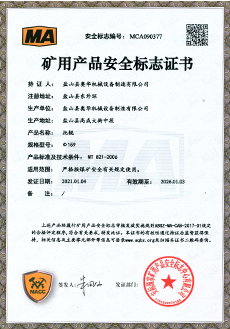 Afrikaans
Afrikaans  Albanian
Albanian  Amharic
Amharic  Arabic
Arabic  Armenian
Armenian  Azerbaijani
Azerbaijani  Basque
Basque  Belarusian
Belarusian  Bengali
Bengali  Bosnian
Bosnian  Bulgarian
Bulgarian  Catalan
Catalan  Cebuano
Cebuano  Corsican
Corsican  Croatian
Croatian  Czech
Czech  Danish
Danish  Dutch
Dutch  English
English  Esperanto
Esperanto  Estonian
Estonian  Finnish
Finnish  French
French  Frisian
Frisian  Galician
Galician  Georgian
Georgian  German
German  Greek
Greek  Gujarati
Gujarati  Haitian Creole
Haitian Creole  hausa
hausa  hawaiian
hawaiian  Hebrew
Hebrew  Hindi
Hindi  Miao
Miao  Hungarian
Hungarian  Icelandic
Icelandic  igbo
igbo  Indonesian
Indonesian  irish
irish  Italian
Italian  Japanese
Japanese  Javanese
Javanese  Kannada
Kannada  kazakh
kazakh  Khmer
Khmer  Rwandese
Rwandese  Korean
Korean  Kurdish
Kurdish  Kyrgyz
Kyrgyz  Lao
Lao  Latin
Latin  Latvian
Latvian  Lithuanian
Lithuanian  Luxembourgish
Luxembourgish  Macedonian
Macedonian  Malgashi
Malgashi  Malay
Malay  Malayalam
Malayalam  Maltese
Maltese  Maori
Maori  Marathi
Marathi  Mongolian
Mongolian  Myanmar
Myanmar  Nepali
Nepali  Norwegian
Norwegian  Norwegian
Norwegian  Occitan
Occitan  Pashto
Pashto  Persian
Persian  Polish
Polish  Portuguese
Portuguese  Punjabi
Punjabi  Romanian
Romanian  Russian
Russian  Samoan
Samoan  Scottish Gaelic
Scottish Gaelic  Serbian
Serbian  Sesotho
Sesotho  Shona
Shona  Sindhi
Sindhi  Sinhala
Sinhala  Slovak
Slovak  Slovenian
Slovenian  Somali
Somali  Spanish
Spanish  Sundanese
Sundanese  Swahili
Swahili  Swedish
Swedish  Tagalog
Tagalog  Tajik
Tajik  Tamil
Tamil  Tatar
Tatar  Telugu
Telugu  Thai
Thai  Turkish
Turkish  Turkmen
Turkmen  Ukrainian
Ukrainian  Urdu
Urdu  Uighur
Uighur  Uzbek
Uzbek  Vietnamese
Vietnamese  Welsh
Welsh  Bantu
Bantu  Yiddish
Yiddish  Yoruba
Yoruba  Zulu
Zulu Understanding the Functionality and Importance of Idler Conveyor Rollers in Material Handling Systems
Understanding Idler Conveyor Rollers An Essential Component in Material Handling
In the world of material handling, conveyor systems play a pivotal role in enhancing efficiency and productivity. Among the integral components of these systems are idler conveyor rollers. These rollers are crucial for supporting the weight of the conveyed material and ensuring the smooth operation of the conveyor belt. In this article, we will explore the significance, types, and advantages of idler conveyor rollers.
What Are Idler Conveyor Rollers?
Idler conveyor rollers are cylindrical components that are used in conveyor belt systems to support and guide the belt as it moves. Unlike driven rollers, which are powered to move the belt, idler rollers remain stationary and provide support to the load. They prevent sagging and maintain proper alignment of the conveyor belt, ensuring that materials are moved efficiently from one point to another.
Types of Idler Conveyor Rollers
Idler conveyor rollers come in various types, each designed to meet specific operational needs
1. Carrying Rollers These are the most common type of idlers, designed to support the weight of the material on the conveyor belt. They are typically spaced at regular intervals along the conveyor.
2. Return Rollers Positioned on the return side of the belt, these rollers support the belt as it returns to the loading point. They are essential for maintaining the tension and alignment of the belt.
3. Impact Rollers These rollers are located at points where material is dropped onto the conveyor. They are designed to absorb the impact and prevent damage to the belt and the structure.
4. Training Rollers These idlers are used to keep the conveyor belt aligned, preventing it from drifting off to one side during operation. Proper alignment is crucial for minimizing wear and maximizing the lifespan of the belt.
idler conveyor roller

5. Specialty Rollers There are also various specialty rollers, including self-cleaning rollers and rollers designed for specific applications, such as food processing or heavy-duty operations.
Advantages of Idler Conveyor Rollers
Idler conveyor rollers offer several advantages that contribute to the overall efficiency and longevity of conveyor systems
1. Reduced Friction By providing a smooth surface for the conveyor belt to glide over, idler rollers reduce friction, which in turn minimizes wear and tear on the belt and motor.
2. Load Distribution Idler rollers help in evenly distributing the load along the conveyor belt, reducing stress on any single point and prolonging the life of both the belt and the rollers.
3. Improved Efficiency The use of idler rollers enables easier movement of materials, which increases overall throughput and operational efficiency.
4. Low Maintenance High-quality idler rollers are designed for durability and longevity, which means less frequent replacements and lower maintenance costs over time.
5. Versatility With a range of designs available, idler rollers can be tailored to meet the specifications of various industries, including mining, packaging, and food processing.
Conclusion
Idler conveyor rollers are vital components in the effective operation of conveyor systems. Understanding their types, advantages, and roles can help businesses optimize their material handling processes. By investing in high-quality idler rollers, companies can enhance the efficiency, reliability, and longevity of their conveyor systems, ultimately leading to improved productivity and reduced operational costs. As industries continue to evolve and demand more efficient solutions, the importance of idler conveyor rollers cannot be overstated.





























